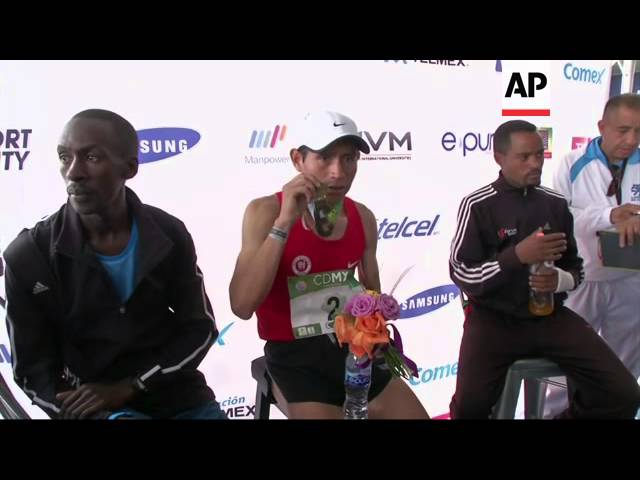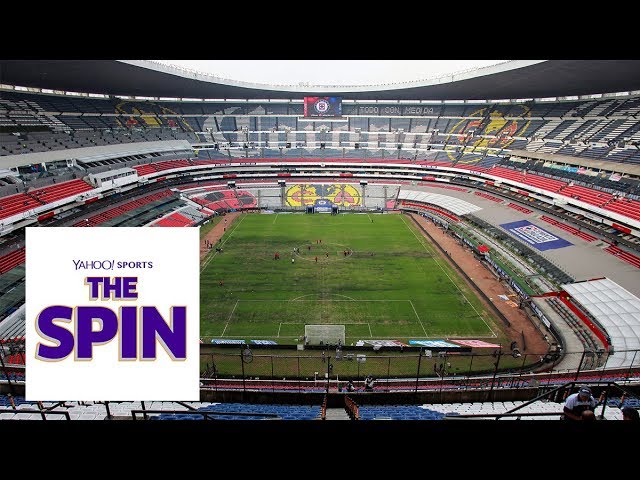The Thrill of the Mexico City Marathon 2015
The Mexico City Marathon 2015 offered an unparalleled experience for both elite and amateur runners from around the globe. Set against the backdrop of one of the most vibrant and culturally rich cities in the world, this marathon did not just challenge the physical endurance of the participants but also immersed them in the breathtaking landscapes and historical landmarks that define Mexico City. Covering a distance of 42.195 kilometers, the race kicked off in the heart of the city, winding its way through bustling streets, past ancient ruins, and modern marvels, making it a visually stimulating journey from start to finish.
One of the most compelling aspects of the Mexico City Marathon 2015 was its altitude. The city’s elevation at over 2,200 meters adds an extra layer of challenge, testing the runners’ stamina and adaptability to high altitudes. However, it also offered a unique advantage, as participants trained in the thin air could potentially see improvements in their performance when returning to lower elevations. The high altitude combined with the city’s scenic views provided an extraordinary running experience, attracting athletes who were eager to push their limits in an environment unlike any other.
The support and enthusiasm from the local community were palpable throughout the race. Spectators lined the streets, cheering and offering encouragement to the marathoners in a display of warmth and hospitality that characterizes Mexico City. Volunteers at hydration stations and along the route played a crucial role in keeping the runners motivated and well-hydrated, adding to the overall positive atmosphere of the event. This strong community involvement not only uplifted the spirits of the participants but also highlighted the city’s tight-knit and supportive culture.
In addition to the personal achievements and memorable experiences of the runners, the Mexico City Marathon 2015 also served as a platform to showcase Mexico City’s commitment to sports and healthy living. With initiatives aimed at encouraging physical activity among its residents, the marathon emphasized the importance of wellness and endurance sports within the community. This event not only provided a stage for awe-inspiring athletic feats but also fostered a sense of unity and pride among participants and spectators alike, making the Mexico City Marathon 2015 a pivotal moment in the world of international marathons.
A Runner’s Guide to the Mexico City Marathon 2015
The Mexico City Marathon, held annually, is one of the most anticipated events for running enthusiasts around the globe. In 2015, this prestigious race promised an exceptional experience for both seasoned marathoners and first-time participants. The marathon route, covering 42.195 kilometers through the heart of Mexico City, offered runners a unique blend of urban landscapes and historical sites, making it not only a physical challenge but a cultural journey as well.
Training for the Mexico City Marathon required a tailored approach, particularly due to the city’s high altitude of over 2,200 meters above sea level. Runners were advised to incorporate altitude training into their regimen weeks or even months before the race. Hydration and nutrition strategies also needed special consideration to combat the effects of thinner air. Those participants who arrived early in Mexico City took advantage of acclimatization runs, gradually increasing their exposure to the altitude while exploring the city’s scenic parks and running routes.
As race day approached, the excitement was palpable among the international and local running communities. The 2015 marathon kicked off early in the morning to mitigate the impact of Mexico City’s bustling traffic and to provide more comfortable temperatures for the runners. Participants gathered at the starting line near the iconic Zócalo, ready to embark on a route that would take them past landmarks such as the Monument to the Revolution, Chapultepec Park, and the historic Paseo de la Reforma avenue.
The event was not only about individual achievements but also highlighted the spirit of camaraderie and mutual support among runners. Water stations, cheer zones, and live music performances dotted along the course fueled participants’ energy and resolve. For many, crossing the finish line in the city’s Olympic Stadium was a moment of triumphant personal accomplishment, symbolized by the marathon’s bespoke medals that each finisher received.
Beyond the race itself, the Mexico City Marathon of 2015 served as an open invitation for runners to immerse themselves in the rich cultural fabric of Mexico. Many participants extended their stay to enjoy guided tours, culinary delights, and relaxation in some of Mexico’s renowned vacation spots. The marathon acted as a gateway, introducing the vibrant heart and soul of Mexico City to a global audience, through the universal language of running.
The Cultural Journey of the Mexico City Marathon 2015
The Mexico City Marathon of 2015 wasn’t just a test of physical endurance; it was a vibrant journey through the heart of Mexico’s rich cultural landscape. Participants and spectators alike were treated to a course that beautifully encapsulated the essence of Mexico City, showcasing its historic landmarks, modern districts, and everything in between. From the starting line at the iconic Zócalo, the city’s main square, to the lush paths of Chapultepec Park, the route was a live museum of Mexican heritage, architecture, and spirit.
As runners navigated the streets of Mexico City, they passed by several UNESCO World Heritage Sites, including the historic center with its ancient Aztec temples and grand colonial buildings, and Xochimilco with its floating gardens. Each kilometer seemed to offer a new chapter in Mexico’s story, prompting many participants to slow their pace just to savor the view. The Mexico City Marathon 2015 acted not just as a race but as a guided tour through time and culture, with the rhythm of footsteps echoing the heartbeats of Mexican history.
The energy and enthusiasm of the local communities along the marathon route further enriched the cultural journey. Spectators lined the streets, offering not just cheers and encouragement but also a taste of local flavors, with food stands serving everything from tacos to tamales, adding a gastronomic dimension to the marathon experience. This interaction between the runners and the local populace added a layer of warmth and authenticity to the event, turning the physical challenge into a communal celebration of Mexican culture and hospitality.
Moreover, the Mexico City Marathon 2015 incorporated traditional music and dance performances at various points along the route, providing runners and spectators with a dynamic showcase of Mexican arts. From mariachi bands to folkloric ballets, these performances added a festive atmosphere, making the marathon a moving fiesta. This fusion of sport, history, and culture encapsulates the unique allure of the Mexico City Marathon, marking it as more than just a race but a profound cultural journey through the very heart of Mexico.
Training for Altitude: Preparing for the Mexico City Marathon 2015
Mexico City presents a unique challenge to marathon runners around the world due to its high altitude, which sits at approximately 2,250 meters (7,382 feet) above sea level. This significant elevation can impact athletes’ performance because of the lower oxygen levels. Thus, preparing for the Mexico City Marathon requires specific training strategies to adapt to these conditions effectively.
To begin with, incorporating altitude training into your regime is crucial. Starting this preparation well in advance of the race day allows your body to adjust to the reduced oxygen levels. Strategies include training at altitude if possible, or utilizing simulated altitude environments, which can be found in some modern gyms or through altitude simulation tents. Additionally, focusing on cardiovascular exercises and high-intensity interval training (HIIT) can enhance your body’s efficiency at utilizing oxygen, thus preparing it for the conditions you will face in Mexico City.
Hydration and nutrition also play vital roles in adapting to high altitudes. Ensuring you consume a balanced diet rich in iron will support oxygen delivery throughout your body. Moreover, hydration is key, as high altitudes can lead to quicker dehydration. Drink plenty of fluids and become acquainted with your body’s hydration needs under these unique conditions. Remember, training for a marathon is as much about preparing your body’s endurance as it is about understanding and adapting to the environment you will be running in.
Memorable Moments from the Mexico City Marathon 2015
The Mexico City Marathon, held in 2015, offered an array of unforgettable experiences not only for the runners but also for the spectators who came from various corners of the globe. Known for its vibrant atmosphere and challenging altitude, the event showcased the spirit of Mexico City through its historical streets and landmarks. The marathon wove its way past the iconic Angel of Independence, through the bustling Paseo de la Reforma, and around the picturesque Chapultepec Park, presenting runners with a visually stunning backdrop against which to push their limits.
One of the most talked-about moments was when thousands of participants gathered at the starting line in the early morning hours, surrounded by the anticipation and excitement that only such an event can bring. The air was filled with a mix of nervousness and determination, as runners from different backgrounds and skill levels shared the same goal: to conquer the marathon. As the starting gun went off, the wave of runners surged forward, embarking on a journey that would test their endurance and willpower.
Throughout the marathon, the streets of Mexico City were lined with enthusiastic crowds, cheering and offering encouragement. The support was overwhelming, with spectators holding signs, playing music, and providing much-needed motivation for the runners. This incredible show of community spirit made the marathon much more than a race; it transformed it into a city-wide celebration of strength, perseverance, and camaraderie.
Another unforgettable moment was the triumphant finish at the historic Zócalo, one of the world’s largest city squares. The faces of the runners as they crossed the finish line, a mixture of exhaustion and exhilaration, were a testament to the personal battles fought and won that day. Each participant, regardless of their finish time, was greeted with cheers, respect, and admiration, highlighting the inclusive and supportive nature of the Mexico City Marathon. This event truly embodied the essence of adventure and challenge, leaving lasting memories for everyone involved.
Why the Mexico City Marathon 2015 is a Must-Run Race
The Mexico City Marathon 2015 stands out as a must-run race for several compelling reasons. First and foremost, this event offers runners the unique opportunity to traverse the historic streets of one of the largest and most vibrant cities in the world. Mexico City, known for its rich culture and history, provides a picturesque backdrop that is unmatched, making each mile an exploration of the city’s heart and soul.
Exceptional Route and Organization: One of the key aspects that set the Mexico City Marathon 2015 apart is its exceptional route and organization. The marathon’s path takes runners through iconic landmarks, including the Chapultepec Park, the Angel of Independence, and the Zócalo, Mexico City’s main square. Moreover, the organizers’ commitment to a seamless experience ensures ample hydration stations, medical support, and enthusiastic crowds lining the streets to cheer on the participants.
High Altitude Challenge: Running the Mexico City Marathon also presents a unique challenge due to its high altitude. Situated over 2,200 meters above sea level, Mexico City tests runners’ endurance and adaptability, offering a different kind of test from most other marathons. This distinctive feature attracts athletes who are looking to push their limits and experience how altitude affects performance.
Cultural Immersion and Post-Race Festivities: Beyond the physical challenge, participating in the Mexico City Marathon 2015 is an immersive cultural experience. The event showcases the city’s warm hospitality, with locals and visitors alike joining in a celebration of sport and community. After crossing the finish line, runners can enjoy post-race festivities that highlight Mexico’s delicious cuisine, music, and dance, allowing them to soak up the local culture.
Lastly, the climate of Mexico City in August is ideal for marathon running. The pleasant morning temperatures provide optimal conditions for runners, making the physical challenge more manageable and enjoyable. This, combined with the points mentioned above, cements the Mexico City Marathon 2015 as a must-run race for both seasoned marathoners and first-timers looking for an unforgettable experience.


